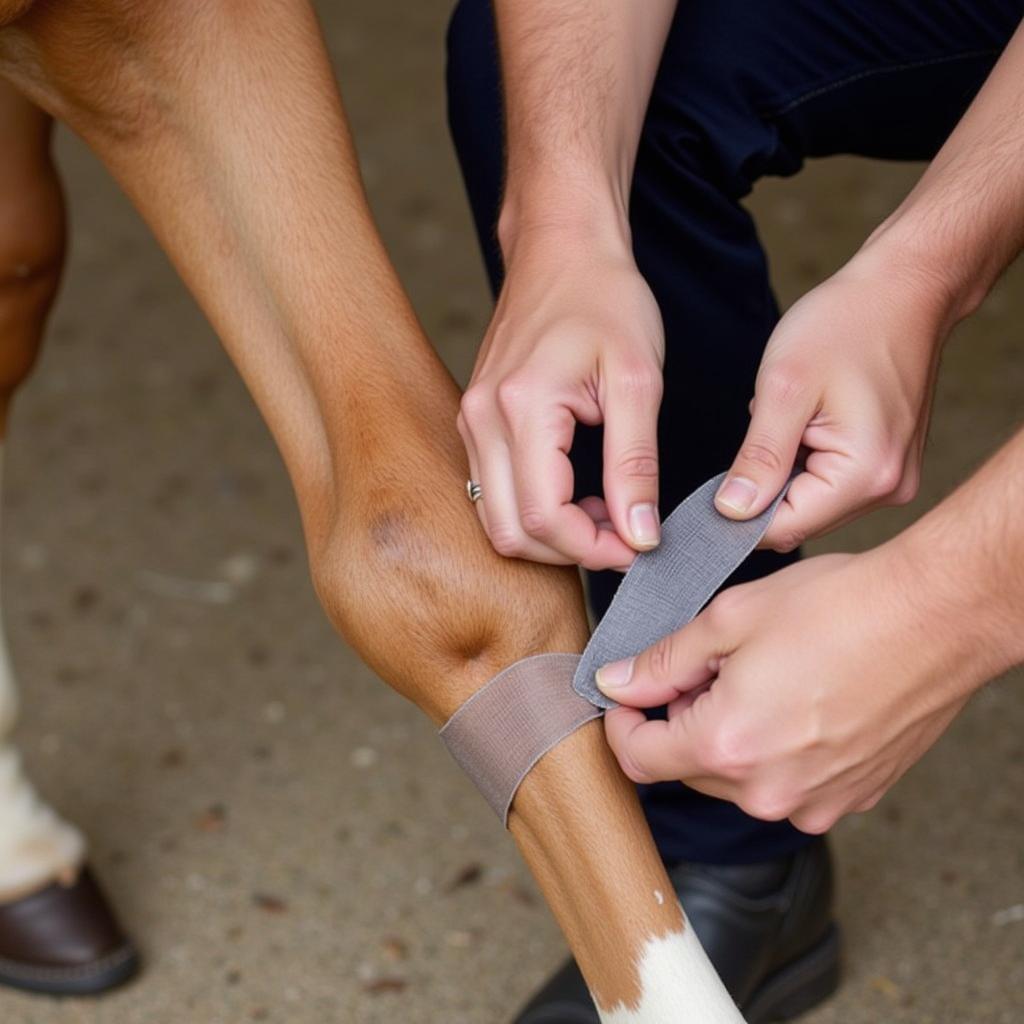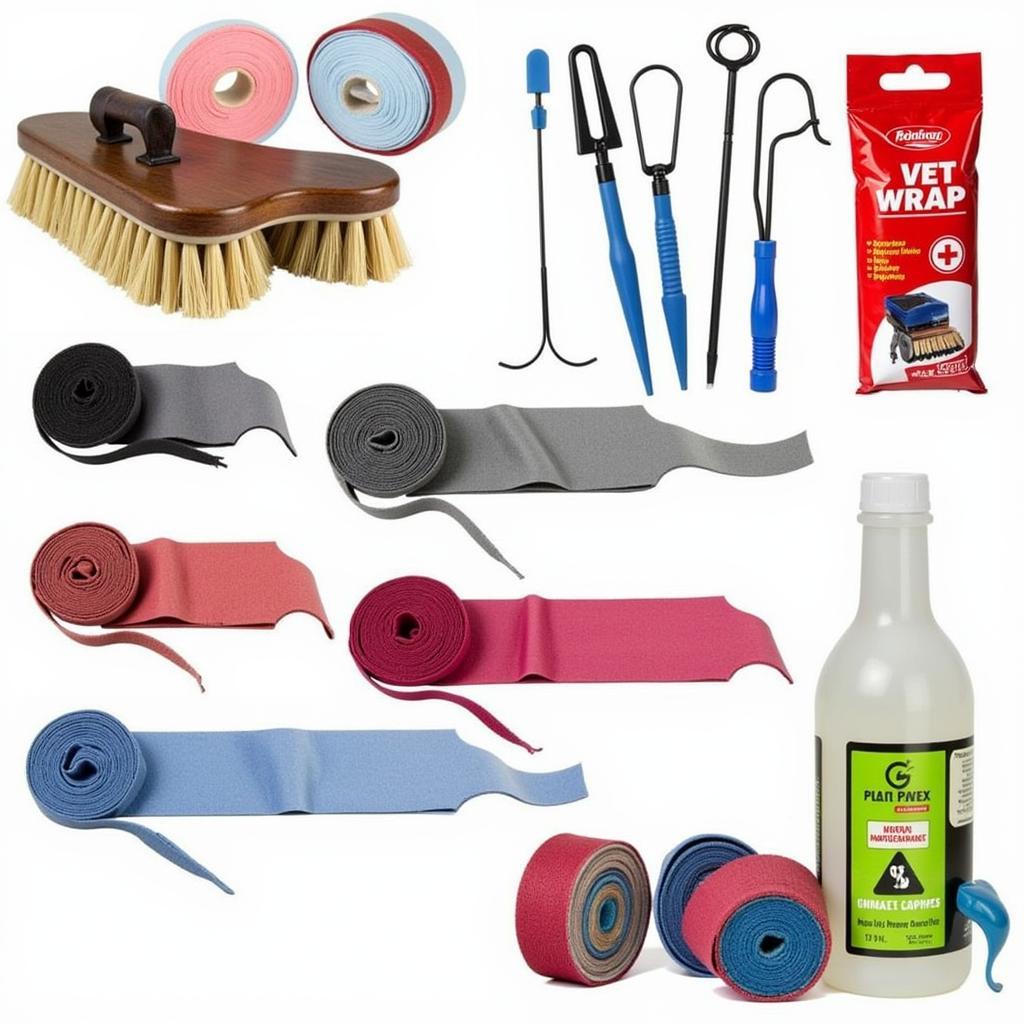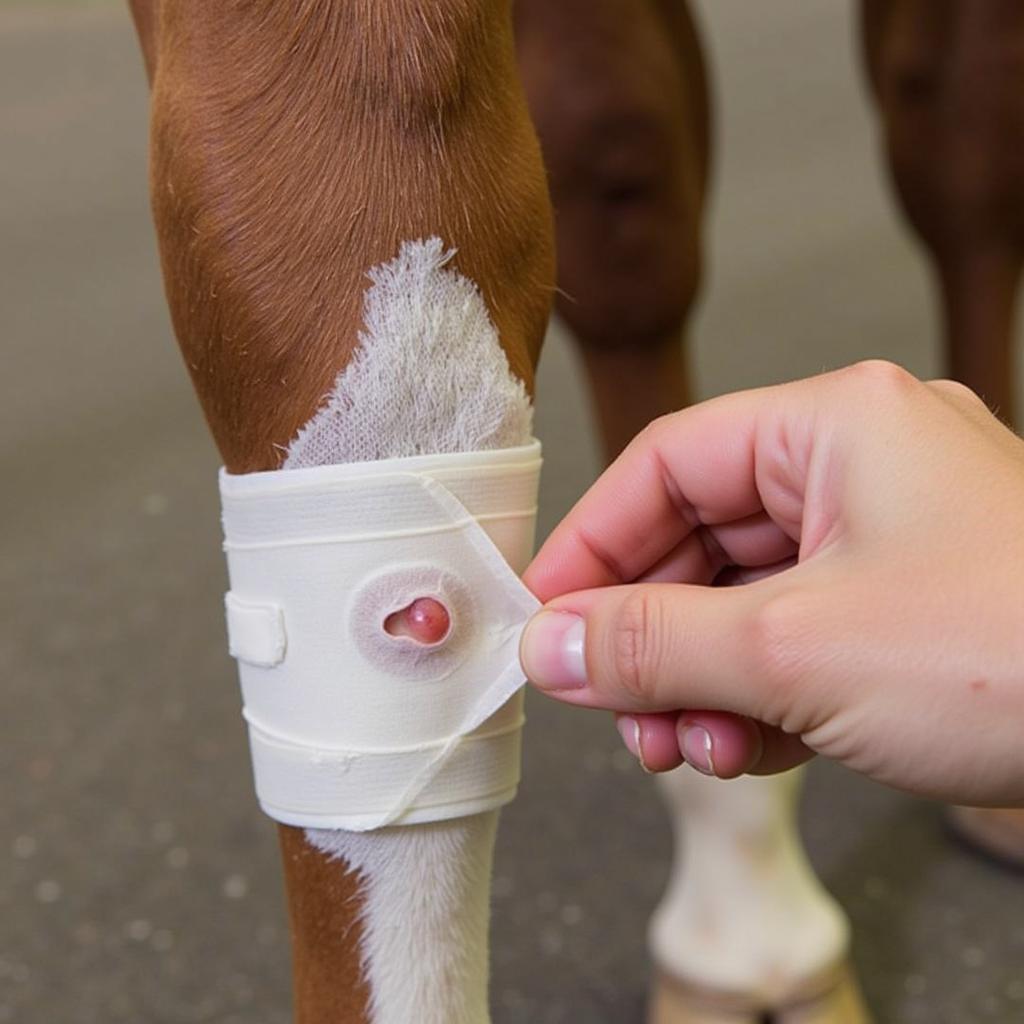Vet wrap is an essential item in any horse owner’s first-aid kit. This versatile bandage provides support, protects wounds, and secures dressings, making it a crucial tool for equine care. Understanding how and when to use vet wrap effectively can significantly contribute to your horse’s well-being.
What is Vet Wrap and Why is it Important?
Vet wrap, also known as cohesive bandage, is a self-adhering elastic wrap designed specifically for animal use. Unlike traditional bandages, vet wrap sticks to itself but not to the horse’s hair or skin. This unique property allows for secure bandaging without the need for clips or pins, reducing the risk of further injury. Vet wrap is lightweight, breathable, and comes in various colors, making it a practical and versatile solution for a range of equine health needs. It’s indispensable for everything from minor cuts and abrasions to supporting injured tendons and ligaments. Having horse wrap tape readily available is crucial for addressing injuries promptly and effectively.
Equine legs are particularly susceptible to injuries, and vet wrap plays a crucial role in providing support and protection during the healing process. It can also be used to secure poultices and other medications, ensuring they remain in contact with the affected area. Proper application of vet wrap is essential to prevent complications and promote optimal healing. Overly tight wrapping can restrict blood flow, while loose wrapping can be ineffective and even cause further damage.
 Applying Vet Wrap to a Horse's Leg
Applying Vet Wrap to a Horse's Leg
Different Uses of Vet Wrap for Horses
Vet wrap has a multitude of applications in equine care. Beyond the typical use for wound care, it’s also incredibly useful in other situations. For example, it can provide support to weakened or injured tendons and ligaments, reducing strain and promoting healing. It’s often used in conjunction with polo wraps for horses for added protection during exercise.
Vet wrap is also invaluable for securing dressings and poultice horse applications. Its self-adhering nature ensures the dressing stays in place, maximizing the effectiveness of the treatment. This is particularly important for wounds that are difficult to bandage with traditional methods, such as those located on joints or areas with a lot of movement.
“Vet wrap is like a multi-tool for horse owners,” says Dr. Emily Carter, DVM, specializing in equine sports medicine. “Its versatility and ease of use make it a must-have for any first-aid kit.”
How to Apply Vet Wrap Correctly
Proper application is key to maximizing the benefits of vet wrap and minimizing potential risks. Start by ensuring the area is clean and dry. Begin wrapping at the bottom of the limb and work your way upwards, overlapping each layer by about 50%. Maintain even tension throughout the process, avoiding wrinkles or gaps. The wrap should be snug but not too tight – you should be able to slip a finger between the wrap and the leg. Secure the end of the wrap by pressing it firmly against itself.
 Vet Wrap in Different Colors with Horse Supplies
Vet Wrap in Different Colors with Horse Supplies
When to Seek Veterinary Advice
While vet wrap is a valuable tool for managing minor injuries, it’s essential to know when professional veterinary care is necessary. Deep wounds, punctures, or injuries involving joints or tendons require immediate veterinary attention. If you notice any signs of infection, such as swelling, heat, redness, or pus, consult your veterinarian promptly. Also, if you’re unsure about how to properly apply vet wrap or if your horse shows any signs of discomfort, it’s always best to err on the side of caution and seek professional guidance.
“While vet wrap is extremely useful, it’s not a substitute for professional veterinary care,” emphasizes Dr. Carter. “If you’re ever in doubt, it’s always best to contact your vet.”
 Applying Vet Wrap to a Horse's Leg Wound
Applying Vet Wrap to a Horse's Leg Wound
Choosing the Right Vet Wrap
Selecting the right vet wrap is important for effective treatment. Consider the size and location of the injury when choosing the width of the wrap. Smaller widths are suitable for legs and smaller areas, while wider widths are better for larger areas or for securing best standing wraps for horses. You can also find best liniment for horses to complement your horse care routine.
Conclusion
Vet wrap is an invaluable tool for every horse owner. Understanding its proper use and application can help you effectively manage minor injuries and support your horse’s well-being. Always keep vet wrap in your first-aid kit and remember to consult your veterinarian for any serious injuries or concerns.
FAQ
- Can I reuse vet wrap? No, vet wrap is designed for single use.
- How tight should I apply vet wrap? Snug but not constricting – you should be able to slip a finger between the wrap and the leg.
- What are the signs of too-tight vet wrap? Swelling, coldness, or discomfort below the wrap.
- Can vet wrap be used on other animals? Yes, vet wrap is safe for use on most animals.
- What should I do if the wound gets worse after applying vet wrap? Contact your veterinarian immediately.
- How do I store vet wrap? Store in a cool, dry place away from direct sunlight.
- Where can I buy vet wrap? At most feed stores, tack shops, or online retailers.
Need help with your horse? Contact us:
Phone Number: 0772127271
Email: [email protected]
Address: QGM2+WX2, Vị Trung, Vị Thuỷ, Hậu Giang, Việt Nam.
We have a 24/7 customer service team.